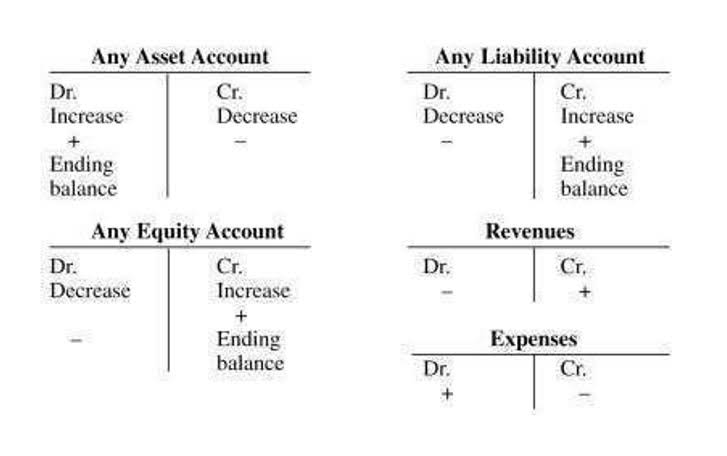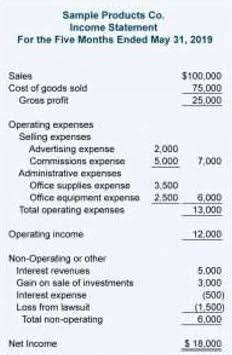
Dividend payments can vary widely, depending on the company and the firm’s industry. Established businesses that generate consistent earnings make larger dividend payouts, on average, because they have larger retained earnings balances in Online Accounting place. However, a startup business may retain all of the company earnings to fund growth.
Owner’s Equity

Financial obligations that have a repayment period of greater than one year are considered long-term debt. Debts is retained earnings a long term liabilities that are due within the current year are known as short/current long-term debt. Included among these obligations are such things as long-term leases, traditional business financing loans, and company bond issues.

Are Retained Earnings a Type of Equity?
There’s almost an unlimited number of ways a company can use retained earnings. The decision to retain earnings or to distribute them among shareholders is usually left to the company management. However, it can be challenged by the shareholders through a majority vote because they are the real owners of the company. A decrease in the value of a long term asset to an amount that is less than the amount shown under the cost principle.
Part 2: Your Current Nest Egg
Given the above information, the company’s December 31 balance sheet will report $1,500 as the current asset prepaid expenses. On February 28 prepaid expenses will report $900 (3 months of the insurance cost that is unexpired/still prepaid X $300 per month), and so on. However, some accounting rules do require some recorded costs to be reduced through a contra asset account. It is also possible that the reported amount of these and other long-term assets will be reduced when their book values (cost minus accumulated depreciation) have been impaired.
Stockholders’ Equity
- Therefore, always consult with accounting and tax professionals for assistance with your specific circumstances.
- Now that you’re familiar with the terms you’ll encounter on an income statement, here’s a sample to serve as a guide.
- The current asset other receivables is the amount other than accounts receivable that a company has a right to receive.
- A corporation’s own stock that has been repurchased from stockholders.
- Business owners use a variety of software to track D/E ratios and other financial metrics.
- You can pull this info from your company’s records or bank statements.
- Retained earnings offer a window into a company’s financial soul, encapsulating its ability to churn profits and sustain itself without leaning on external funding.
Companies in the consumer staples sector tend to have high D/E ratios for similar reasons. The debt-to-equity ratio is most useful when used to compare direct competitors. If a company’s D/E ratio significantly exceeds those of others in its industry, then its stock could be more risky. We can see below that for Q1 2024, ending Dec. 30, 2023, Apple had total liabilities of $279 billion and total shareholders’ equity of $74 billion. Business owners use a variety of software to track D/E ratios and other financial metrics.

How Can the D/E Ratio Be Used to Measure a Company’s Riskiness?

A dividend is not an expense on the corporation’s income statement. A class of corporation stock that provides for preferential treatment over the holders of common stock in the case of liquidation and dividends. For example, the preferred stockholders will be paid dividends before the common stockholders receive dividends. In exchange for the preferential treatment of dividends, preferred shareholders usually will not share in the corporation’s increasing earnings and instead receive only their fixed dividend. These provide additional information pertaining to a company’s operations and financial position and are considered to be an integral part of the financial statements.
- Things that are resources owned by a company and which have future economic value that can be measured and can be expressed in dollars.
- The reason is that corporations will likely use the cash generated from its earnings to purchase productive assets, reduce debt, purchase shares of its common stock from existing stockholders, etc.
- Net profit refers to the total revenue generated by a company minus all expenses, taxes, and other costs incurred during a given accounting period.
- As the company loses ownership of its liquid assets in the form of cash dividends, it reduces the company’s asset value on the balance sheet, thereby impacting RE.
- Instead, any sales taxes not yet remitted to the government is a current liability.
Essentially, retained earnings include all profits a company makes. This amount comes after deducting all expenses for a period from the total income. When these amounts accumulate for several periods, they go to the retained earnings account. However, these amounts only include profits not paid to shareholders in previous periods.
What Is a Good Debt-to-Equity (D/E) Ratio?
For example, a prospective mortgage borrower is more likely to be able to continue making payments during a period of extended unemployment if they have more assets than debt. This is also true for an individual applying for a small business loan or a line of credit. Finally, if we assume that the company will not default over the next year, then debt due sooner shouldn’t be a concern. In contrast, a company’s ability to service long-term debt will depend on its long-term business prospects, which are less certain.
- In short, retained earnings are the cumulative total of earnings that have yet to be paid to shareholders.
- Short-term obligations that must be paid within a year or operating cycle are considered current liabilities.
- Companies can further expand these formulas by separating cash and stock dividends.
- As an investor, one would like to know much more—such as the returns that the retained earnings have generated and if they were better than any alternative investments.
- For instance, if your business has $20,000 left over after covering all its financial responsibilities—including operating expenses like employee salaries—you would report that money as retained earnings.
For example, a balance sheet dated December 31 summarizes the balances in the appropriate general ledger accounts after all transactions up to midnight of December 31 have been accounted for. The balance sheet reports information as of a date (a point in time). Retained earnings are the cumulative profit and losses of a company that has been reinvested into the business rather than being distributed as dividends to shareholders. Retained earnings are reported on the balance law firm chart of accounts sheet under shareholder equity, which is classified as a long-term asset. Retained earnings are a type of equity and are therefore reported in the shareholders’ equity section of the balance sheet.
Deixe um comentário